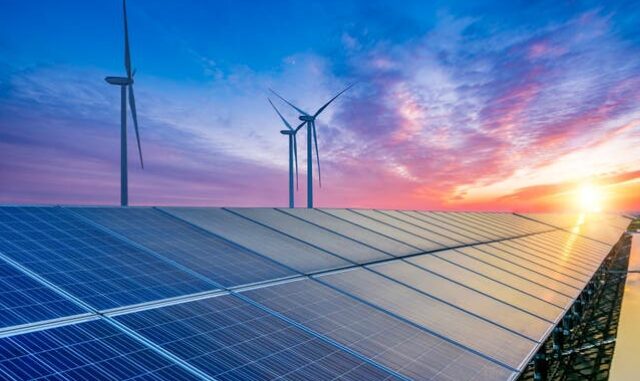
Renewable energy is characterized by several key features that distinguish it from non-renewable energy sources.
Here are the primary characteristics: 1. Sustainability








Definition: Renewable energy sources are naturally replenished on a human timescale, meaning they do not deplete over time.
Examples: Sunlight, wind, water flow, and geothermal heat.
2. Low Environmental Impact
Definition: Generally produces fewer pollutants and greenhouse gases compared to fossil fuels.
Examples: Solar and wind energy produce no emissions during operation; biomass can be carbon-neutral if sourced sustainably.
3. Resource Abundance
Definition: Renewable resources are abundant and widely available, often with a global presence.
Examples: Sunlight is available almost everywhere, wind is prevalent in many regions, and water flows in rivers worldwide.
4. Energy Security
Definition: Reduces dependence on imported fuels, enhancing national and regional energy security.
Examples: Countries can harness local renewable resources to meet their energy needs, reducing reliance on foreign oil or gas.
5. Decentralization and Accessibility
Definition: Renewable energy technologies can be deployed at various scales, from small off-grid systems to large power plants.
Examples: Solar panels can be installed on residential rooftops, while large wind farms can supply electricity to the grid.
6. Economic Benefits
Definition: Potential to create jobs in manufacturing, installation, maintenance, and other sectors.
Examples: The renewable energy sector supports millions of jobs worldwide, contributing to economic development.
7. Technological Advancements
Definition: Continuous improvements and innovations are increasing efficiency and reducing costs.
Examples: Advances in solar panel efficiency, battery storage technologies, and wind turbine design.
8. Intermittency and Variability
Definition: Some renewable energy sources, like solar and wind, are intermittent and dependent on weather conditions.
Challenges: Requires backup systems, energy storage solutions, or grid management techniques to ensure a reliable supply.
9. Modular and Scalable
Definition: Renewable energy systems can be scaled up or down to meet specific energy demands.
Examples: Small solar home systems for individual households or large-scale solar farms for grid supply.
10. Geographical Limitations
Definition: Some renewable resources are location-specific and not evenly distributed.
Challenges: Geothermal energy is best harnessed in regions with significant geothermal activity; hydropower requires suitable water bodies.
11. Initial Investment Costs
Definition: Higher upfront costs compared to some fossil fuel technologies, though operational costs are typically lower.
Examples: Installation of wind turbines and solar panels can be expensive initially, but they offer long-term savings and low maintenance costs.
Conclusion
The characteristics of renewable energy highlight its potential to provide a sustainable, clean, and secure energy future. While there are challenges, such as intermittency and initial costs, the benefits in terms of environmental impact, resource abundance, and economic opportunities make renewable energy a crucial part of the global energy strategy.

Leave a Reply